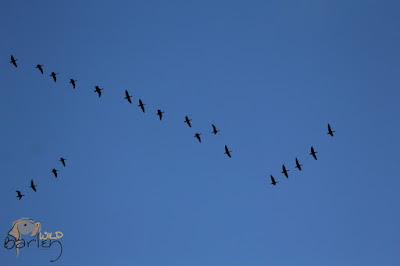The sun was descending through a crisp blue sky, heading for the horizon along which a few remaining clouds drifted with curtains of rain. The sky above was still clear and blue, fading to pale blue and gold at the horizon. From behind the dark greyish blue clouds come streaks of sunlight. A blustery wind rips across the land, tugging at scraggly bushes and tall grass and creating ripples in the incoming tide of water. Silvery channels of water meander across the mud flats, occasionally blazing gold as it catches the rays of the setting sun. Across this darkening mudscape is a living carpet of birds. Ripples of movement spread through the throng, even in the fading light you can see the golden tinge to the birds feathers. They are Golden Plover. Further along and there is a black and white mass of Oystercatchers. Suddenly the birds lift in waves into the blustery air creating a whirling mass of tiny dark specks against the pale blue and gold of the sky. Pale flashes catch the light as the birds twist and turn as one. They swirl restlessly until resettling on the mud flats - the spectacle of thousands of waders being pushed up the estuary and beach by the incoming tide.
 |
| A whirling flock of waders |
Away from the estuary and the waders, two birds suddenly appear from behind a bank. Long winged, graceful and elegant, they swoop along the bank, wing tips barely touching the tops of the grass before looping up and away. One perches on a fence post. It is a Pallid Harrier. A young bird which looks remarkably like the young and female of our own breeders, although becoming increasing rare themselves especially in England, the Hen Harrier. But a pale collar and pale feathers on the wing tells us it is a juvenile Pallid Harrier. The bird takes off again and almost from nowhere a different bird takes chase. Rounded wing and golden brown, a Short-eared Owl chases the harrier, swerving to and fro, sometimes dipping low and then diverting up and over the top of the bank the pair disappear from sight. The Pallid Harrier is not a usual bird for the UK, breeding on the steppes of Russia and central Asia before migrating south to winter in India and south-east Asia. Occasionally a wandering bird turns up in the UK causing some level of excitement amongst birders.
 |
| Birders gather to get a glimpse of the Pallid Harrier |
By now the sun has disappeared leaving a final trail of golden light and tinging the very tips of the clouds with pink. Above the sky is darkening. The water and mud of the estuary darkens to an almost purplely blue colour, and the waders are getting harder to see. In the sky above, against the deep dark blue, long ribbons of birds appear trailing across the sky, honking. Pink-footed Geese, hundreds and hundreds of them returning to the estuary to roost. On and on the skeins keep appearing, silhouetted against the final golden rays of sunlight on the horizon.
 |
| Pink-footed Geese coming into roost |
No comments:
Post a Comment